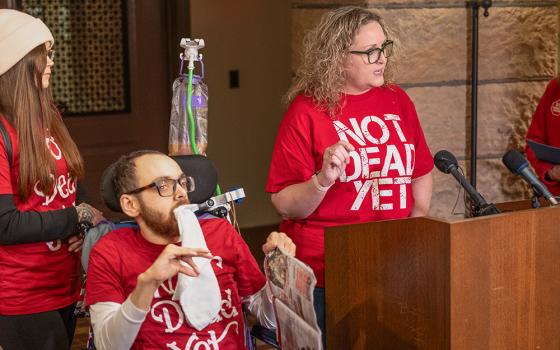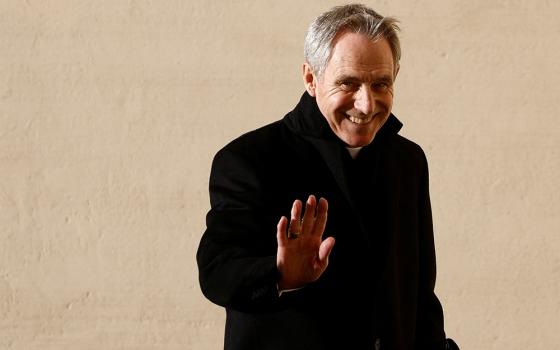By JOHN L. ALLEN JR.
Santa Barbara, California
As anyone familiar with church history knows, the Catholic Church is, in many ways, one of the most change-resistant institutions on earth. Because the church regards itself as the carrier of eternal verities, and because it believes its fundamental structures were given by Christ, it is designed not to be swept away by the passions of a given era. Practically, this means the church is always a bit “behind the times,” especially at its most senior levels.
This doesn’t imply the church never changes, of course, merely that it takes longer to move.
One important current in Catholicism at the moment is the dramatic demographic transition from North to South which gathered steam throughout the 20th century, and continues in the 21st. In 1900, a mere 14.6 percent of Catholics in the world lived in the global South, meaning Africa, Asia, and Latin America. Today 65.5 percent of Catholics, almost two-thirds of all Catholics alive, are found in the South. By 2025, only one Catholic in five in the world will be a non-Hispanic Caucasian. Demographically and sociologically, Catholicism is becoming a religion of the “two-thirds” world.
When I discuss this transition in front of audiences, usually the first question is when the senior leadership of the church will reflect its demographic realities. After all, the election of Joseph Ratzinger as Pope Benedict XVI meant a choice for a white European. At the moment, half of the electors in the College of Cardinals, meaning those under 80 with the right to vote for the next pope, are Europeans, despite the fact that only 26 percent of the Catholics in the world today are in Europe. Brazil, the largest Catholic country on earth, has only three cardinal-electors, while Italy, the fifth largest Catholic country, has 19.
This discrepancy, I usually say, shouldn’t surprise anyone, since change in the church almost always arrives at the top last. Moreover, there’s mounting evidence that the new face of Roman Catholicism is, slowly but surely, revealing itself in Rome.
The last two major appointments to the Roman Curia from Benedict XVI went to cardinals from the South: Cardinal Ivan Dias of Bombay, named in May to head the Congregation for the Evangelization of Peoples, and Cardinal Claudio Hummes of São Paulo, Brazil, appointed in October as prefect of the Congregation for Clergy.
This week came news that Benedict XVI has named several cardinals from the developing world to the powerful Council of Cardinals for the Study of Organizational and Economic Questions of the Apostolic See. They include Wilfrid Fox Napier of South Africa, Juan Luis Cipriani Thorne of Peru, Anthony Olubunmi Okogie of Nigeria, Eusébio Oscar Scheid of Brazil, Gaudencio B. Rosales of the Philippines, and Nicholas Cheong Jinsuk of South Korea. Also appointed were George Pell of Australia and Marc Ouellet of Canada.
The council, which meets twice a year to over the financial affairs of the Vatican, has traditionally been top-heavy with cardinals from affluent Northern dioceses, such as Cardinal Joachim Meisner from Cologne, Germany, and American Cardinals Edward Egan from New York and Roger Mahony from Los Angeles. Informally, the understanding has been that since these are the local churches that kick in the lion’s share of the financing for the Holy See, it’s only fair for them to have some role in overseeing how the money is handled.
The addition of several cardinals from the South means that prelates from the developing world will be much more involved when important dollars-and-cents decisions are made, and as any student of organizational management will tell you, you can determine who counts in an institution by observing who’s at the table when money is on the line.
Students of church politics will note that in these appointments, Benedict XVI turned to several men known for “Ratzingerian” outlooks on theological questions – Pell, Cipriani, Scheid and Oullet would all generally be considered part of the “conservative” wing of the churches they represent.
In the long run, however, the appointments of Feb. 3 may be remembered less for what they reveal about the theological orientation of Catholicism under Benedict, and more as another signpost along the path to leadership that better reflects the church’s sociological composition.
Rosales, by the way, has a reputation as the Muhammad Yunus of the Catholic Church, pioneering an experiment in “micro-charity.” Rosales launched the Pondo ng Pinoy Program in 2004, which encourages Filipinos to donate .25 pesos, or roughly .005 U.S. cents, each day to relief for the poor. In the Philippines, the appointment of Rosales to the Vatican council that handles economic questions has been seen as an endorsement for the Pondo ng Pinoy Program.




